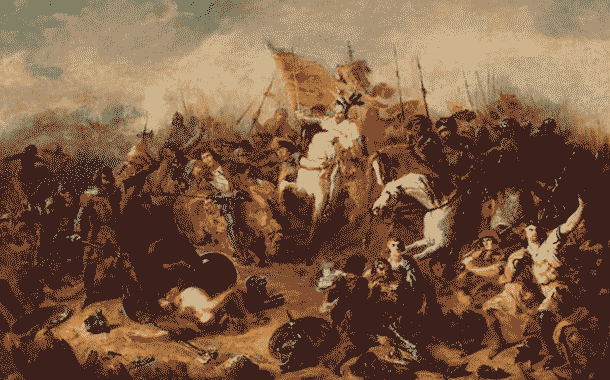<![CDATA[October 14th marks the anniversary of the ending of a major era in British history. On this day in 1066, King Harold II of England was defeated at the Battle of Hastings. The defeat symbolised the end of the Anglo-Saxon period of British history. The victor on the day, William the duke of Normandy, would go on to seize London and the English throne, becoming the country's first Norman King. Anyone who grew up in England will know the story of the events of 1066. Alongside the Magna Carta, the War of the Roses and the English Civil War, it is one of the defining events of British history. The Domesday Book and Bayeux Tapestry are two well known sources on Norman life, both of which were created as a consequence of the battle. The Norman period saw drastic cultural change; French became the language of the king's court, gradually fusing with the Germanic Anglo-Saxon language to form modern day English. In addition, the feudal system increasingly developed into the common method of social organisation, a situation that would persist for hundreds of years. A dispute over the succession of the English throne was the key cause behind the Norman Conquest of England. Harold's predecessor, Edward the Confessor (so called because of his supposed piety) had died childless. Historians believe that in 1051 Edward had promised the throne to William. On Edward's deathbed in January 1066 however, he granted the throne to Harold, head of the Godwine family - the most powerful noble family in England at the time. William disputed the claim, and began his invasion of England at Pevensey on the 28th September. By October 13th his army of seven thousand Norman troops had reached Hastings, where Harold had also arrived to attempt to block the invasion. The following day battle commenced at Senlac Hill, seven miles from Hastings. The fight raged for most of the day, supposedly coming to a conclusion when Harold was struck in the eye and killed by a Norman arrow. The outcome was precariously balanced for most of the battle. William had an army of professional soldiers while Harold's was mostly made up of enlisted peasants. On the other hand, Harold had taken the tactically advantageous position at the top of Senlac Hill. The battle seemed to be swinging in Harold's favour, until his troops broke the shield wall fortification they had made, to chase retreating Norman soldiers. At this point they surrendered their tactical advantage, and were quickly slaughtered by William's forces. As is usually the case, the history of the battle was written by the victors, as the majority of the English soldiers present on the day had been killed. The primary source is the Bayeux Tapestry, constructed some eleven years after the event by French nuns. Historians are increasingly questioning the validity of the tapestry as it is undeniably biased, having been commissioned by the Normans, and it is unclear what sources the nuns in Bayeux based their work on. Just recently, a group of archaeologists have argued that Harold wasn't actually killed and dismembered at Hastings, but escaped and lived out the rest of his days a secluded hermit. Their argument is based on a twelfth century document housed in the British museum. They claim it disproves the Norman account of events, and suggest that Harold is actually buried on the grounds of a church in Waltham Abbey, Essex. The team of archaeologists from Oval Film and Stratascan are planning to carry out a scan on Harold's supposed tomb, to look for his remains. The Battle of Hastings was a crucial event in the history of Great Britain. The story of 1066 is one that still inspires the imagination and is still firmly locked in the British national consciousness. The work of archaeologists in Waltham Abbey may lead to a reappraisal of the aftermath of the battle, but more than that it shows there is still a great deal to learn about even the most fundamental events of our past.]]>
Remembering and Revaluating 1066
